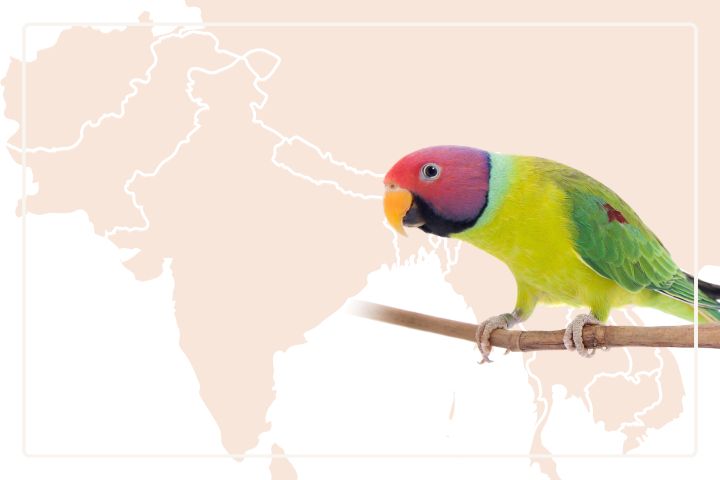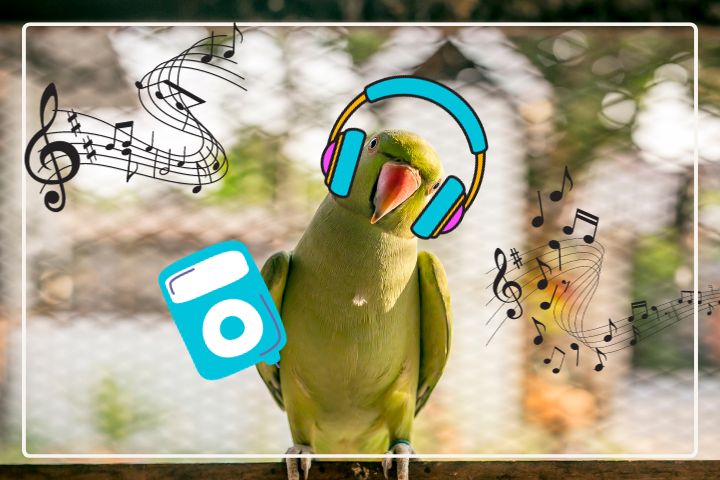Are Alexandrine Parrots Aggressive?
Alexandrine parrots, also known as Alexandrine parakeets, are a large species of parrot native to India and Sri Lanka. These intelligent, energetic birds are popular as pets due to their ability to mimic speech, their striking plumage, and their overall friendly and playful nature.
However, some people may be wary of getting an Alexandrine parrot due to concerns about aggressive behavior. All parrot species have the potential to be aggressive, but this tends to be more pronounced in larger, more powerful birds like Alexandrines.
So are Alexandrine parrots aggressive by nature? The answer is more nuanced than a simple yes or no. Alexandrine parrots can display aggressive behaviors, especially if not properly trained and socialized. But their disposition also depends a lot on their environment, handling, and early upbringing. With the right care and training, most Alexandrine parrots can become very affectionate, docile companion pets.
In this article, we’ll take a closer look at the typical temperament of Alexandrine parrots and what factors can contribute to aggressiveness. We’ll also discuss taming techniques and tips for curbing biting, lunging, screaming, and other problematic behaviors in Alexandrine parrots.
Typical Temperament of Alexandrine Parakeets
In general, Alexandrine parakeets have an outgoing, engaging personality when properly socialized from a young age. Here’s an overview of the temperament that well-raised Alexandrine parrots typically exhibit:

- Affectionate and Social – Alexandrines form strong bonds with their owners and love spending time interacting. They’ll often solicit attention by calling your name or climbing on you.
- Playful and Energetic – Alexandrines love toys and activities that provide mental and physical enrichment. Puzzle toys, shredding, flying, climbing and more keep them happily occupied.
- Curious and Intelligent – These parrots are very smart and observational. They enjoy exploring new things and solving problems. Their intelligence also lets them learn tricks and words easily.
- Vocal – Alexandrine parrots are known for their talking ability and loud voices. They’ll make a wide variety of sounds including mimicking speech.
- Friendly with Known People – Alexandrines that are socialized properly generally do well around familiar people they see often. Strangers may be greeted more cautiously.
- Somewhat Territorial – Alexandrines can be possessive of their cages, toys, food bowls and even owners. This can contribute to nipping when defending “their” domain.
- Variable Personality – Each Alexandrine has its own unique personality. Some are more clingy, others more independent. Their disposition depends on early experiences and handling.
So in the right environment, Alexandrine parrots are generally quite friendly, social and eager to interact. But improper care and training is where you can see more undesirable temperament traits emerge. Next we’ll go over the types of aggressive behaviors Alexandrine parrots can display if not properly raised.
Read our article Why Do Alexandrine Parrots Scream?
Aggressive Behaviors in Alexandrine Parrots
While a properly socialized Alexandrine parrot will be friendly and loving most of the time, they can still exhibit aggressive behaviors in certain situations. Here are some of the common aggressive behaviors you may encounter:
Biting
Biting is one of the most prevalent aggressive behaviors in Alexandrine parrots. Some potential reasons for biting include:
- Fear – Unfamiliar people or objects can cause fearful biting.
- Mishandling – Grabbing at a parrot or restraining them often elicits bites.
- Boredom – Inadequate toys and interaction can lead to biting for attention.
- Territoriality – Alexandrines may bite to defend perceived territory or resources.
- Nesting Instinct – Hormonal, breeding birds may bite to protect a nest area.
With patience and training, most Alexandrine parrots can be taught not to bite people. But it’s important to understand the potential motivations behind the behavior.

Lunging and Charging
Lunging or suddenly charging at a person is another aggressive display. It’s often accompanied by biting. This behavior usually indicates:
- High arousal and lack of trust in humans
- A particularly fearful state
- Guarding territory like a cage
By avoiding direct eye contact and not overreacting, you can often de-escalate this behavior before it leads to biting.
Screaming and Squawking
While vocalizations are part of owning a parrot, loud screaming or squawking can also be a sign of aggression in Alexandrines. Potential reasons include:
- Fear, stress or annoyance
- Trying to get attention
- Warning you away from territory
Screaming should not be reinforced with attention. Providing adequate enrichment and training more polite flock calls can help minimize excessive screaming.
Territorial Aggression
Alexandrines consider their cages, favorite perches or toys, and even their owners as their territory. You may see aggressive displays like:
- Hissing, lunging or biting when approaching territory
- Puffing up feathers to appear larger
- Refusing to step up or come when called
Having multiple food bowls, perches, and interacting with your parrot away from the cage can help reduce territorial behavior.
Factors Contributing to Aggression
There are a number of factors that can lead to increased aggressive tendencies in Alexandrine parrots:
- Improper early socialization – Parrots that are not frequently handled and positively interacted with when young are more likely to be fearful or aggressive.
- Lack of training – Alexandrines need training and structure to learn good manners and curb problematic instincts. Insufficient training often leads to aggression.
- Stress – Chronic stress from improper environment, diet, or predictable handling can manifest as aggression.
- Fear – Unfamiliar people, objects, or handling techniques can elicit fearful responses like biting.
- Boredom – Inadequate mental stimulation often leads to attention-seeking bites.
- Medical issues – Pain or illness can make parrots generally irritable and prone to biting.
- Hormonal changes – Unspayed or unneutered parrots can become very territorial and aggressive.
- Breeding behaviors – Parrots with a perceived nest site may attack to defend it.
With the proper care, training and troubleshooting, most causes of aggressive behavior can be remedied or managed. Next we’ll go over some training techniques to curb aggression.
Taming and Reducing Aggressive Behaviors
While some aggressive tendencies are innate in Alexandrine parrots, there are many things you can do to curb these behaviors and build trust:

- Start young – Supervised handling and positive reinforcement training from a young age is key.
- Use target training – Touching their beak to a target stick can build confidence during handling.
- Desensitize gradually – Slowly introduce new people, objects and handling over multiple sessions.
- Ensure proper environment – Give your parrot adequate enrichment, foraging opportunities and training.
- Address health issues – Take your parrot for regular vet checkups to rule out pain or illness.
- Consider spay/neuter – This can significantly reduce territorial hormonal aggression.
- Be patient and persistent – Changing ingrained behaviors takes time and consistency. But it’s very rewarding!
Working with an avian behavior consultant can also provide invaluable guidance for curbing aggression.
The Importance of Proper Socialization and Training
Raising a tame, friendly Alexandrine parrot hinges on two key things – socialization and training.
Proper socialization from a young age involves:
- Frequently handling and interacting with the parrot
- Introducing new people, experiences and stimuli gradually
- Using positive reinforcement, not punishment
- Setting boundaries and preventing problematic behavior
Equally important is ongoing training:
- Basic commands like step up, come, and no
- Target training and desensitization to handling
- Teaching tricks and behaviors to stimulate their mind
- Reinforcing calm, polite flock calls over screaming
An untamed, untrained Alexandrine parrot can be challenging at best and dangerously aggressive at worst. But with considerable effort and the right approach, the majority of aggressive behaviors can be mitigated.
Read our article Do Alexandrine Parrots Bite?
Conclusion
While Alexandrine parrots have the potential for aggression like all large parrot species, this tendency arises primarily due to improper care and training rather than an innate aggressiveness. With the right socialization, training techniques, patience and persistence from a young age, most Alexandrines can become very friendly, affectionate companions. They can grow deeply bonded with their owners and smoothly integrated into the family.
Of course, some individual parrots may retain more aggressive tendencies due to early life experiences. Working with avian behavior experts can help modify problematic behaviors that training alone cannot resolve. Overall though, Alexandrine parrots exhibit aggression mainly when important needs like enrichment, training, proper handling and medical care are not met. Satisfy those needs and you are likely to have a loving feathery friend for many years to come.
Frequently Asked Questions
Q: How can I train my Alexandrine Parrot?
A: Training an Alexandrine Parrot involves positive reinforcement techniques such as clicker training. By rewarding desired behaviors with treats and praise, you can encourage your parrot to learn tricks and manners.
Q: What is clicker training?
A: Clicker training is a form of positive reinforcement training that uses a small handheld device called a clicker to mark the desired behavior. This is followed by a reward, such as a treat or praise, to reinforce the behavior.
Q: Can I use a spray bottle to train my Alexandrine Parrot?
A: While some parrot owners use spray bottles as a deterrent for undesirable behaviors, it’s not recommended as a primary training method. Positive reinforcement techniques tend to be more effective and promote a stronger bond with your parrot.
Q: Why does my Alexandrine Parrot become aggressive?
A: There can be several reasons why an Alexandrine Parrot becomes aggressive. It could be due to fear or insecurity, lack of proper socialization, territorial behavior, hormonal changes, or previous negative experiences.
Q: What does it mean when my Alexandrine Parrot growls?
A: Growling is a behavior that Alexandrine Parrots may display when they feel threatened or defensive. It’s their way of communicating that they are unhappy or uncomfortable with the current situation.
Q: Is it normal for my Alexandrine Parrot to go through a bluffing stage?
A: Yes, it is normal for Alexandrine Parrots to go through a bluffing stage during their adolescence. This is a period when they may test boundaries and display challenging behaviors. Consistent training and patience are key to navigate this stage successfully.
Q: How can I teach my Alexandrine Parrot to step up onto my hand?
A: To teach your Alexandrine Parrot to step up onto your hand, use a verbal cue such as “step up” while presenting your hand in front of them. Reward them with a treat or praise when they comply. Gradually increase the duration they stay on your hand before giving the reward.
Q: What is considered acceptable behavior for an Alexandrine Parrot?
A: Acceptable behavior for an Alexandrine Parrot includes being calm and friendly towards both humans and other pets, not biting or displaying aggressive behaviors, responding to commands and cues, and engaging in positive interaction with their environment.








I really enjoy studying on this internet site, it has wonderful posts. “Don’t put too fine a point to your wit for fear it should get blunted.” by Miguel de Cervantes.